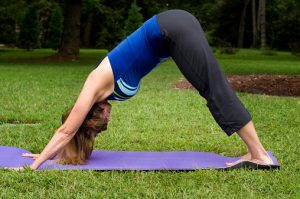 Certain yoga positions may impact eye pressure in glaucoma patients according to new findings. Positions which can increase eye discomfort in glaucoma patients are those where the head is in a downward position.
Certain yoga positions may impact eye pressure in glaucoma patients according to new findings. Positions which can increase eye discomfort in glaucoma patients are those where the head is in a downward position.
Glaucoma is the leading cause of irreversible blindness and can impact a person’s quality of life. When fluid pressure increases in the eye it leads to damage of the optic nerve and so minimizing fluid pressure can also work to reduce optic nerve damage which can contribute to blindness.
Advertisement
“While we encourage our patients to live active and healthy lifestyles, including physical exercise, certain types of activities, including pushups and lifting heavy weights, should be avoided by glaucoma patients due to the risk of increasing IOP and possibly damaging the optic nerve,” study author Robert Ritch explained. “This new study will help clinicians advise their patients on the potential risk associated with various yoga positions and other exercises that involve inverted poses.”
Previous research only studied the headstand position and its effect on eye pressure in glaucoma patients. Those findings revealed that it increased intraocular pressure (IOP) two-folds. The new study had patients with and without glaucoma perform a variety of inverted yoga positions including downward facing dog, standing forward bend, plow, and legs up the wall. IOP was measured at baseline, again immediately when the pose was assumed, two minutes into holding the pose, immediately after the pose when the person returned to a seated position and last 10 minutes after resting.
Both groups of participants saw IOP increase after all four yoga positions with the greatest pressure during downward dog. Even after the participants returned to seated positions IOP still remained slightly elevated.
First author Jessica Jasien added, “While our study results don’t show a dramatic difference in IOP between the normal participants and those with glaucoma, we believe that additional research, with a larger study population and longer durations of practicing the inverted positions is warranted. As we know that any elevated IOP is the most important known risk factor for development and progression of nerve damage to the eye, the rise in IOP after assuming the yoga poses is of concern for glaucoma patients and their treating physicians. In addition, glaucoma patients should share with their yoga instructors their disease to allow for modifications during the practice of yoga.”
It is important that glaucoma patients partake in physical activity but they should be mindful of positions that can worsen glaucoma.
